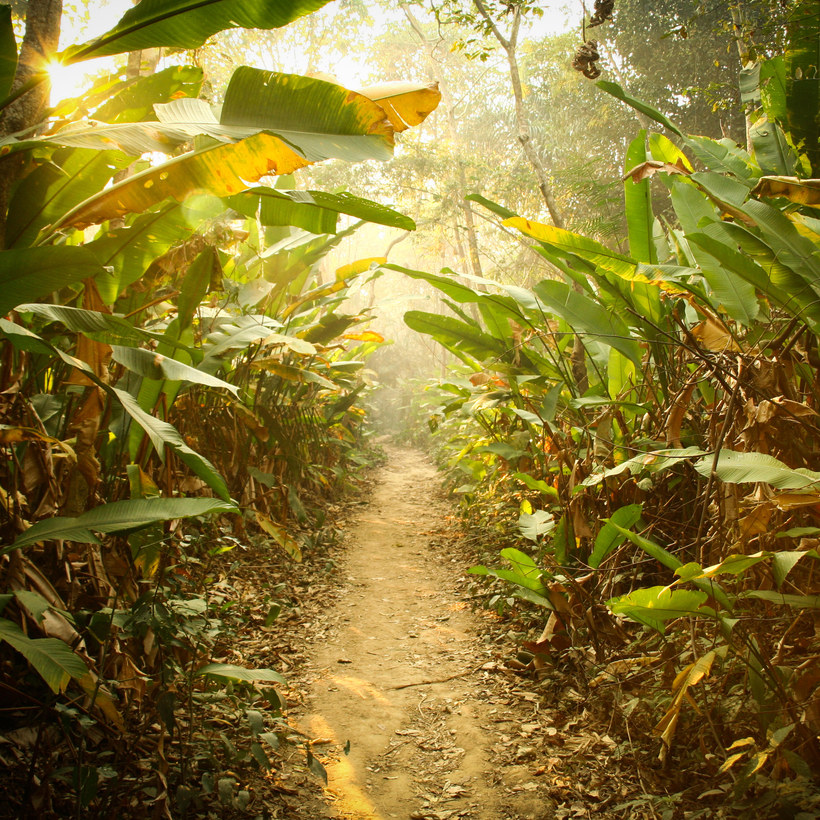In 1925 Colonel Percy Fawcett stocked up on machetes, rifles, a ukulele and British Imperial pluck, and set off into the uncharted Amazon to find the lost City of Z. Somewhere, hidden in what he called “the last great blank space in the world”, this great explorer was convinced there lay a fallen civilization.
We do not know whether he found it: he never returned.
Now, though, the hidden crannies of Fawcett’s blank space have been illuminated with modern technology: revealing the details of a vast jungle city on the edge of the Amazon, much of which had been obscured by vegetation for centuries.
Using a technology called lidar, which is able to see through the canopy, researchers have surveyed a territory in modern-day Bolivia of a size that would have defeated the best efforts of Fawcett’s machete.
Within it, at a site already associated with a lost culture, they have mapped hamlets, villages, towns, causeways and massive monumental earthworks — including a 16-foot-high mound the area of 30 football pitches, that they estimate would have taken half a million person-days to build. On the mound itself, they found 65-foot-high earth pyramids.

Although the team had known they would find the remains of an ancient settlement — from a culture believed to have existed from AD500 to 1400 — almost half of the 26 sites they mapped were completely new. When viewed at last in its totality they said they were taken aback by the scale, in particular of the pyramids.
“We were very surprised the first time we surveyed the maps,” José Iriarte, from the University of Exeter, said. “This is completely unheard of in Amazonia.”
Until well into the late 20th century there was skepticism that the Amazon could have supported anything other than hunter-gatherer tribes. Those who suggested otherwise were viewed by some as the heirs of Fawcett — they were seeking an El Dorado.
“There was a paradigm that the Amazon is a pristine paradise, where the jungle impedes the development of complex societies,” Iriarte said.
Although the team had known they would find the remains of an ancient settlement — from a culture believed to have existed from AD500 to 1400 — almost half of the 26 sites they mapped were completely new.
But in recent decades evidence has emerged of irrigation, earthworks and large towns. At the Bolivian site, located amid savannah and forest, archaeologists had uncovered artifacts in graves that implied a hierarchical society — with richer residents buried with jewelry made from the gemstone lapis lazuli and jaguar teeth.
The bones of ducks show they were domesticated and fed on maize, implying large areas of forest cleared for crops.
Even with these finds, understanding the scale of the culture has been hard. It rose and fell before the arrival of the Spanish, its streets and houses reclaimed by the jungle. If any oral history remained, it did not survive contact with Europeans, and smallpox.
When Fawcett sought out his City of Z, he knew he was unlikely to succeed.
“The difficulties are great and the tale of disasters a long one, for the few remaining unknown corners of the world exact a price for their secrets,” he said.

A century on, Iriarte, said that the same was true. “Tropical forests do not give up their secrets easily; the vestiges, scale and complexity of these past societies lie concealed under the forest canopy.”
This is where the lidar comes in. He and his colleagues used aircraft equipped with laser scanners that create a radar map of the land beneath the canopy — revealing structures that would often be invisible even if you were standing on top of them.
Looking at six areas in a 2,800-square-mile area, they provide the first systematic idea of the society’s structure, showing tiers of settlements, connected together through the jungle in a civilization, said Iriarte, “that rivals its more famous Andean neighbors”.
In an accompanying editorial Christopher Fisher, from Colorado State University, agreed that the sites represented a “new class of Amazonian urbanism”.
“These data point to dense populations, human-generated landscapes, centres with monumental architecture, and a complex settlement hierarchy that might be indicative of ‘state-level’ societies …
“The scale of the architectural remnants at these sites, which include earthen pyramids that once towered more than 65 feet over the surrounding savannah, cannot be overstated and is on a par with that of any ancient society.”
Tom Whipple is the science editor of The Times of London. Norman Hammond is an archaeologist noted for his research on pre-Columbian Maya civilization

